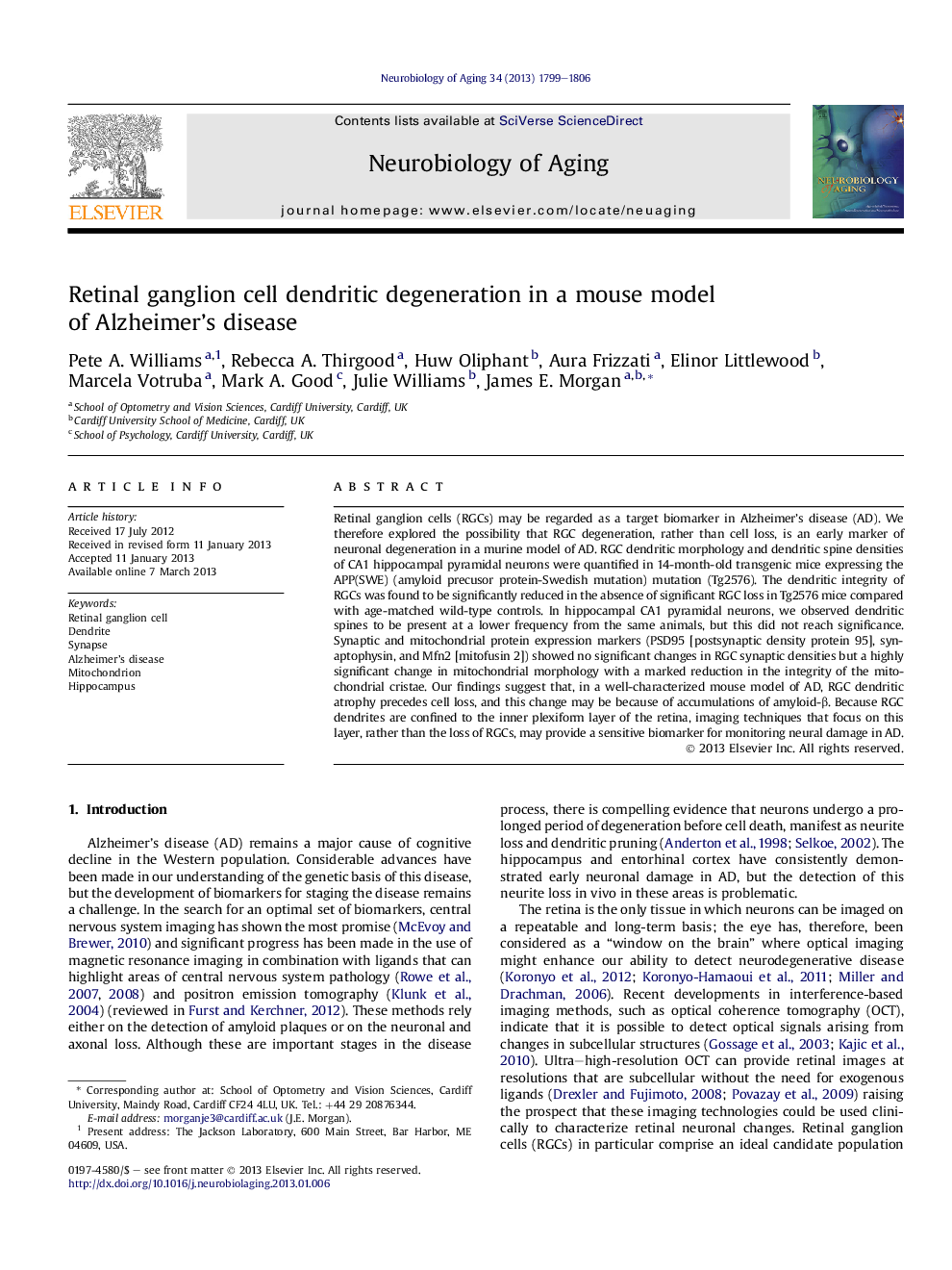| Article ID | Journal | Published Year | Pages | File Type |
|---|---|---|---|---|
| 6807282 | Neurobiology of Aging | 2013 | 8 Pages |
Abstract
Retinal ganglion cells (RGCs) may be regarded as a target biomarker in Alzheimer's disease (AD). We therefore explored the possibility that RGC degeneration, rather than cell loss, is an early marker of neuronal degeneration in a murine model of AD. RGC dendritic morphology and dendritic spine densities of CA1 hippocampal pyramidal neurons were quantified in 14-month-old transgenic mice expressing the APP(SWE) (amyloid precusor protein-Swedish mutation) mutation (Tg2576). The dendritic integrity of RGCs was found to be significantly reduced in the absence of significant RGC loss in Tg2576 mice compared with age-matched wild-type controls. In hippocampal CA1 pyramidal neurons, we observed dendritic spines to be present at a lower frequency from the same animals, but this did not reach significance. Synaptic and mitochondrial protein expression markers (PSD95 [postsynaptic density protein 95], synaptophysin, and Mfn2 [mitofusin 2]) showed no significant changes in RGC synaptic densities but a highly significant change in mitochondrial morphology with a marked reduction in the integrity of the mitochondrial cristae. Our findings suggest that, in a well-characterized mouse model of AD, RGC dendritic atrophy precedes cell loss, and this change may be because of accumulations of amyloid-β. Because RGC dendrites are confined to the inner plexiform layer of the retina, imaging techniques that focus on this layer, rather than the loss of RGCs, may provide a sensitive biomarker for monitoring neural damage in AD.
Related Topics
Life Sciences
Biochemistry, Genetics and Molecular Biology
Ageing
Authors
Pete A. Williams, Rebecca A. Thirgood, Huw Oliphant, Aura Frizzati, Elinor Littlewood, Marcela Votruba, Mark A. Good, Julie Williams, James E. Morgan,
